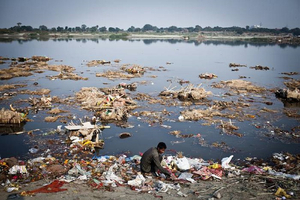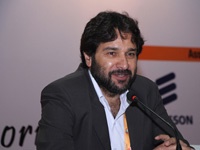Let us remember that life cycle and water cycle are one

By Tikender Panwar
The 8th world water forum will be held in March 2018 in Brazil. The mission statement speaks about promoting awareness, building political commitments followed by actions to facilitate efficient conservation, management and use of water on environmentally sustainable basis. This happens to be a laudable goal. But is it just a utopian target or will the world community, especially the people in South Asia, reach anywhere near it?
In India, roughly half of the population and that is a staggering more than 522 million practice open defecation. According to the World Bank, 21 % of the communicable diseases in India are linked to unsafe water and lack of hygiene practices. This could be explained by none other than Lucknow’s Gorakhpur city which was in the news for the death of over 50 children due to oxygen shortage in the hospital. The reason for the news was perhaps this shortage but the largest killer happens to be Encephalitis – one of the principal water borne diseases in the area.
According to the Gorakhpur environment action group (GEAG), hundreds of children die every year because of it. The resilient Gorakhpur document quite elaborately explains the challenges in management of water which eventually leads to contamination and killing of the children. Even the intended national determined contributions (INDCs) of the Indian government at COP 21 laid stress on the provision of providing potable water to the people, and the daunting task that it has. It is no surprise that India ranks 120th in 122 countries on water related issues.
Water is a state subject in India, and according to the three-tier administrative structure of governance water happens to be the subject managed by the state governments. Only inter-state water issues are under the national government ambit of what is called the union list.
Interestingly, water is distributed either by the parastatals or in some places by the local bodies mainly the larger municipal corporations. However, the management of septage and municipal solid waste is mainly with the municipalities except in a few cities there is hardly any connect or integration between the septage management and the water supply and distribution. This leads to a situation where everyone is responsible but no one is held accountable.
The water does not come from the virgin sources into the city. It comes from the surrounding aquifers. In India, nearly 80% of the supply is from ground water unlike the mountain cities where still surface water remains potable. In such a scenario there is complete integration of septage and ground water with hardly any integration at the management level. These aquifers get polluted and the resultant is the staggering figure of water borne diseases and deaths.
The ICLEI under the Integrated urban water management programme is practicing in four cities , two in Rajasthan and two in Maharashtra where capacity building of the local bodies is being done to enhance their resilience in the governance and management structures. In this direction, another interesting intervention happens to be the formation of the greater Shimla water supply and sewerage circle (GSWSSC) in the city of Shimla where a complete integration of the water supply, distribution and the sewerage management has been done under the singe utility. This has also bore results and enhances resilience.
So, as we get prepared for the world water forum in Brazil, we have serious challenges but we also have these rays of hope not in despair but with commitments and actions.
 Tikender Panwar is the former Deputy Mayor of Shimla.
Tikender Panwar is the former Deputy Mayor of Shimla.


